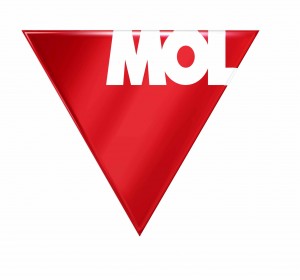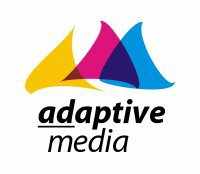Employer support
[extract]
The XCVI. Voluntary Fund Act. of 1993. calls donation an aid/support. The support is not provided directly from the employer to the member or employee but to the Fund on the basis of the relevant support contract.
This transfer of funds is a cost incurred by the transferee of the benefit of the business, does not qualify as a salary and personal payment therefore there are no personal income tax and social security charges nor is it a social tax base adjustment item. It is eligible as an expense so it is not subject to corporate income tax.
How can a donation be given to employees through the fund?
According to the Voluntary Fund Act anyone can make a donation or support to the fund if they entered a relating contract. You may specify the purpose for which the donor will make the donation within the donation/support agreement. If a purpose is not specified, the Fund is obliged to place the amount in its liquidity form, so it is appropriate to provide for its provision.
The rules in place on support are significantly looser than those on employer contributions therefore, the amount paid can be given to the fund’s operational fund and it can also be given to persons with a designated membership. Moreover, the donation can be made regularly or even occasionally – for example as a bonus or premium payment.
According to the Voluntary Fund Act the donation can be given to the membership as a whole or to persons belonging to the circles specified in the Articles of Association. The Articles of Association have specified many different groups based on the needs of the companies and several aspects can be applied at the same time, depending on the company’s decision.
There is no requirement to make a donation, it is not obligatory and it can be given in a non-normative way. You can even pay a differentiated amount per person.
Taxation of the amount paid to the fund from January 2018
It occurs not at the company but the member and it is significantly lower than in the case of employer contribution. The amount of the donation credited to the individual’s account forms a consolidated PIT fund with the member as an individual as other income. The donation, as other income, must be declared by the member at the end of the year and the tax or health contribution on the basis of a certificate issued by the Fund. There is no down payment during the year and no other payment obligations.
Method of calculating tax and health contributions:
Personal income tax – amount received as support x 0.84 x 0.15 = amount received as support x 12.6%
Health contribution – amount received as support x 0.84 x 0.195 = amount received as support x 16.38%
Meaning, the deduction for the worker is only 28.98%.
The amount of the donation is also the basis of the tax credit for cash payments. Namely, according to the Personal Income Tax Act, a member may reclaim 20% of the amount paid as a donation to the extent and in the manner regulated therein. After a maximum of HUF 750,000 per year, HUF 150,000 of tax can be reclaimed into the member’s fund account.
Therefore, after deducting the tax credit from the taxes, the final tax benefit of employer support is 8.98%!
Who may receive support:
- fund members that are employed by the same employer,
- members of the fund who choose the form of self-help fund from the optional fringe benefits,
- fund members with an advocacy body, a social organization, an association, a works council, a certified membership or a board member,
- members of the same age,
- the number of fund members holding the same position or holding the same position with the same employer,
- the number of members of the fund who are employed by the same employer and who have been employed by the employer for a period specified by the sponsor,
- the number of fund members employed by the same employer who make their own contribution higher than the amount indicated by the sponsor in the given calendar year,
- members of the fund who are members of the company with the same legal person or unincorporated legal personality,
- members domiciled within a specific administrative boundary,
- a member receiving a benefit specified by the sponsor from among the benefits provided under the welfare and social benefits scheme, the optional fringe benefits or the cafeteria scheme in the sponsor’s collective agreement or equivalent regulations,
- all fee-paying Fund Members,
- Fund Members with the same duration of employment,
- members with the same qualifications,
- members with the same type of employment contract,
- new members,
- fund members belonging to the same group of employees of the same employer,
- members with disabilities, such as invalidity, accident disability pensioners,
- members of the fund employed by an employer or having a membership relationship with the donor, or a group of members defined by the sponsor (for example, occupation, job, etc.),
- fund members with other (assignment, business) legal relations to work with the same employer,
- fund members using the same fund service,
- members taking the same medicine or using the same medical device,
- members reaching retirement age within the time limit set by the sponsor,
- fund members of a profession, sector, organization,
- members who pay a membership fee higher than a certain amount in a given calendar year,
- members of the department or a group defined by the sponsor,
- the supporting Civil Code. fund members who are not close relatives within the meaning of
- fund members who have a long-term legal relationship with the sponsor or have entered into an ad hoc agreement (even with implied conduct) with the sponsor to perform the services specified by the sponsor,
- members affected by the termination of employment by the same employer or a group defined by the sponsor,
- members of the department or group (s) identified by the sponsor,
- a group of people in the same social, family, social situation (for example, a group of persons determined on the basis of the number of children, large families, those on maternity leave, those in GYES, GYED, those below a certain income level, etc.
Fund expenses:
The support imposes a higher administrative burden on the Fund than an employer contribution therefore, the Fund works at a higher cost as a value-added service. In the case of the employer’s support, 92.5% will be credited to the fund member’s account.
References
 |
 |
 |
 |
Contracts
The contents of the support agreement are always catered to the wishes of the given company and in accordance with the goals to be achieved. Since a very wide variety of contracts are possible, only the most commonly used sample contract can be downloaded. If you need an individual contract, please contact IZYS Customer Service at +36 1 769 0061, where you will be skillfully guided by our professionals.
Resolutions
NATIONAL TAX AND CUSTOMS ON THE TAXATION OF INDIVIDUALS
NATIONAL TAX AND CUSTOMS ON TAXATION OF EMPLOYERS (DONORS) – ONLY IN HUNGARIAN (official document)
Legislation
- 1995. CXVII. TV. Section 28 (1) f. – the aid is considered as other income
- 1995. CXVII. TV. § 29 – tax base 78% (from 2017 82%, from 2018 84%), if 27% (from 2017 22%, from 2018 19.5%) health contribution is charged to the support
- 1998 LXVI. TV. Section 11 (11) d. The Fund is not a payer in respect of a donor donation
- 1995. CXVII. tv Section 44 / A (1) a. – 20% tax credit after the subsidy
- 1995. CXVII. TV. Section 46 (2) d. – the PIT advance payment obligation is not charged to the subsidy
- 1998 LXVI. TV. Section 5 (1) b and e. – on the exemption of fund services (amount withdrawn from the fund)
- 1996 LXXXI. TV. Section 8 (1) d. in addition to Annex 3, Chapter A, item 17 – may be accounted for as an expense incurred in the interest of the enterprise if the donor has a declaration from the donor


